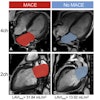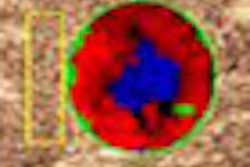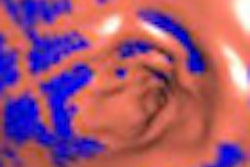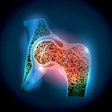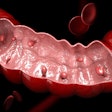Quantitative image analysis may be able to significantly increase the number of living liver donors, according to research from the University of Colorado School of Medicine in Aurora.
Re-evaluation of previously rejected living liver donor patients with a quantitative image analysis system found that nearly half had suitable anatomy for transplantation. If these results are validated, the technology could significantly affect the number of living liver donors and the total number of livers available for transplantation, according to the researchers.
Paul Russ, MD, and colleagues presented their study this week in a poster presentation at the Transplantation Society (TTS) 2010 International Congress in Vancouver.
The group retrospectively studied 30 potential adult living liver donors who were rejected as donor candidates between April 2007 and October 2009. These patients initially underwent hepatic anatomy analysis using a conventional CT protocol that included CT angiography, venography, and cholangiography.
Armed only with the knowledge that the patients had been rejected as liver donors, the study team submitted the same CT data for retrospective analysis using IQQA-Liver quantitative image analysis software (EDDA Technology, Princeton, NJ). The system provides real-time interactive analysis of the liver and intrahepatic anatomies and their spatial relationships based on advanced segmentation, according to the researchers.
The software's segmentation results can be confirmed or adjusted by the user based on the original CT images. Volumes are then calculated accordingly and surgical plans can be interactively modeled, according to Russ and colleagues.
The system allowed for both left and right liver volumes to be interactively determined in real-time. In each case, hepatic artery, hepatic vein, portal vein, and bile duct anatomy and volumes were evaluated with user-confirmed 3D visual and volumetry information, according to the researchers.
Using the same criteria applied in their original assessment, patients were designated as either suitable or unsuitable to serve as a living liver donor based on a confidence scale of 1 (least certain) to 5 (most certain). The researchers then compared the new rating with the results with the original findings.
Of the 30 patients originally rejected, 29 (97%) were previously declined due to unsuitable hepatic anatomy. Fourteen (48%) of these patients were judged to have suitable anatomy transplantation following quantitative imaging analysis.
Two cases had a confidence level of 5, while eight had a confidence level of 4. Four cases had a confidence level of 3.
As for the 15 cases that were still determined to be unsuitable following quantitative image analysis, eight (53%) had hepatic vein abnormalities and seven (47%) had portal vein abnormalities. Four cases (27%) had bile duct abnormalities, while three cases (20%) had hepatic artery abnormalities. Three cases (20%) had small left lobe liver volumes, with a mean value of 24% of the total liver volume.
Due to unsuitable anatomy, five cases (33%) were rejected solely due to hepatic vein abnormalities, three cases (20%) solely due to portal vein abnormalities, one case (7%) solely due to bile duct abnormalities, one case (7%) solely due to small left lobe volume, and five cases (33%) due to a combination of abnormalities, according to the researchers.
"Preliminary results suggest that [living liver donor] assessment could benefit from quantitative analysis and interactive evaluation of liver anatomy in a virtual way using the quantitative imaging analysis system," the researchers concluded in their study abstract.
By Erik L. Ridley
AuntMinnie.com staff writer
August 19, 2010
Related Reading
Contrast US processing tool shows malignant liver lesions, July 30, 2010
Ultrasound elastography characterizes fibrosis severity, January 6, 2010
CT maintains edge over MRI in liver transplant planning, March 10, 2008
Advanced liver imaging shapes surgical strategies, September 18, 2007
Copyright © 2010 AuntMinnie.com



